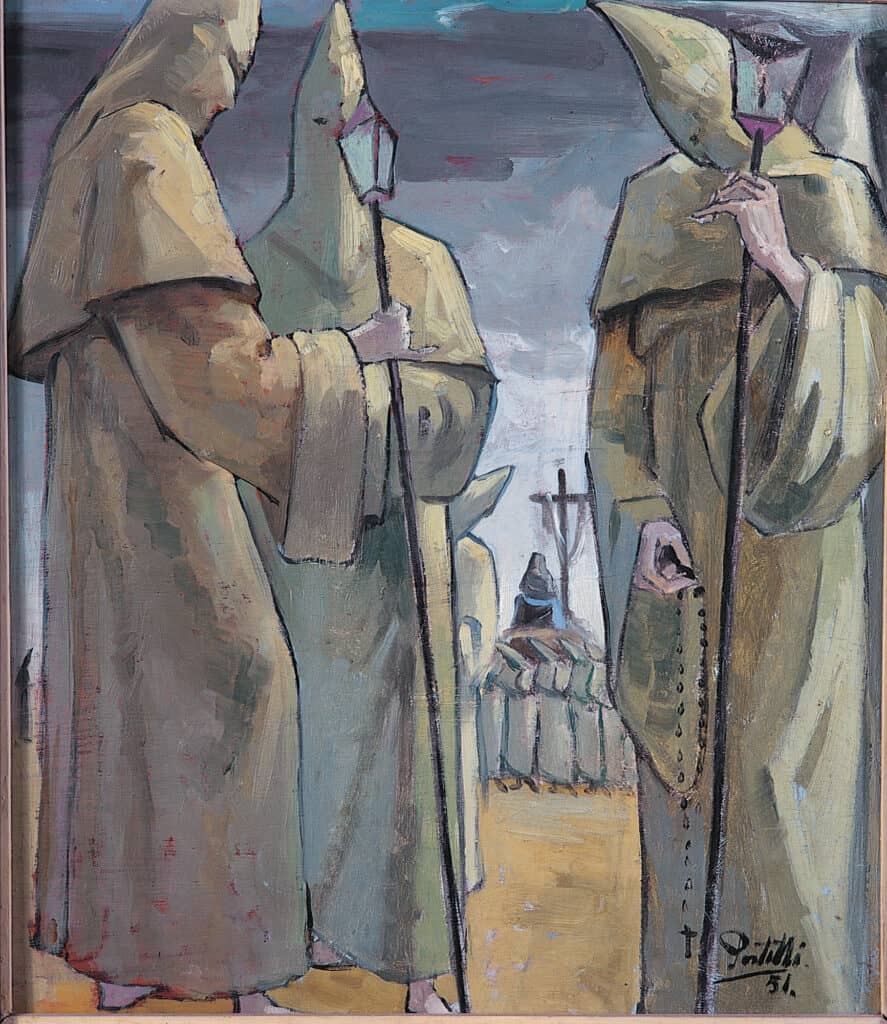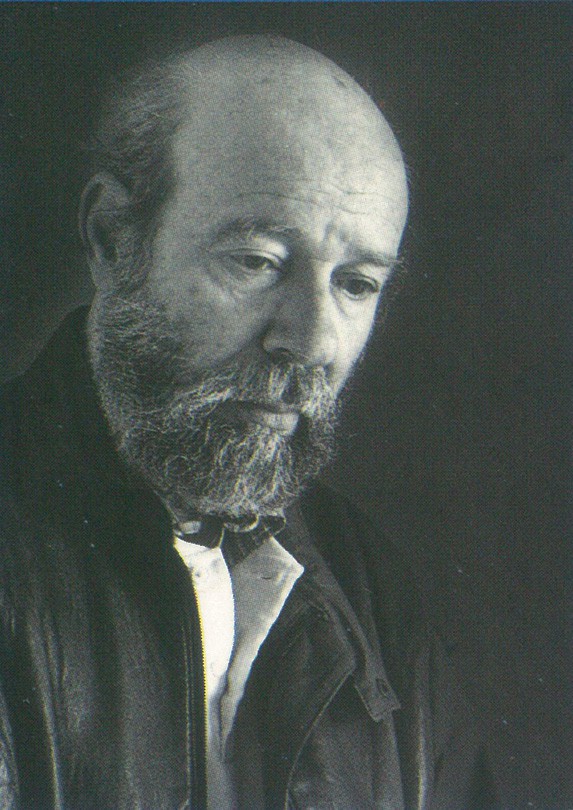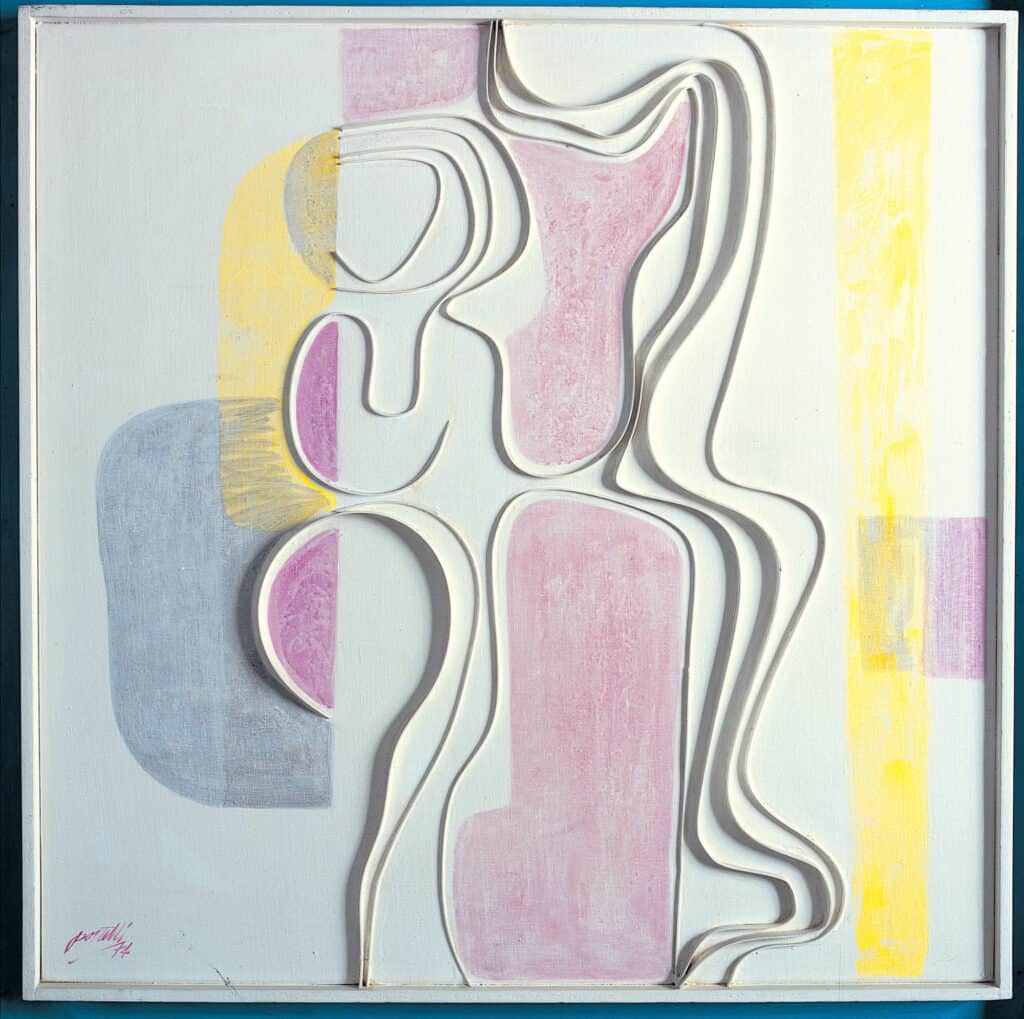Frank Portelli was a Maltese artist whose artistic career was renowned for his various experimentations with a variety of mediums, including painting, sculpture, etching, stained glass, collages and oils, but also experimented as a designer and scenic artist. Formally, his artistic training began at the Malta Government School of Art, under the tuition of Robert Caruana Dingli, Edward Caruana Dingli and Carmelo Mangion. Following this, he was awarded a government scholarship which enabled him to further his studies overseas. With this, he relocated to the UK and studied at the College of Art and Technology in Leicester, and at the Kensington School of Art in London. Following this, he furthered his studies in Paris, Florence and Venice, and eventually returned to Malta in 1950. In 1952, he married Rosa Attard and started a family. Essentially, his experiences overseas allowed him to emerge concurrently with the international artistic context. Therefore, upon his return to Malta he co-founded the Modern Art Circle (later known as the Modern Art Group and eventually Atelier ’56) which was instrumental in generating awareness on the modern art movement in Malta.
As a result of his experience overseas, Portelli developed a style and artistic practice which was unique in the local context. This garnered attention from the public, and Portelli was one of seven Maltese artists who was chosen to represent Malta for the very first time in the Venice Biennale in 1958. In addition to this, he also participated in several exhibitions, both locally and internationally, including at the Commonwealth Institute Exhibition in South Kensington, London in 1958. Adjacent to his artistic practice, Portelli held a position at the Air Ministry, where he was responsible for map reading and plotting grids. This experience proved to be crucial in his artistic development, for it is with his years observing the contours of the different landscapes that he was inspired to create his ‘Conoturs’’series of works. This series is considered to be his greatest achievement in his contribution to abstract art. In 1963, Portelli resigned from his position at the Air Ministry in order to become an interior designer full-time, which differentiated him from his peers at the time, who were primarily teachers.
Frank Portelli’s artistic legacy was honoured throughout his lifetime, and he was awarded the XIV International Grolla d’Óro in Venice. During his later years, he continued engaging in his artistic practice, and also delved into different media including postage stamps, murals and stained glass. In 1984 he designed the high altar for the parish church of Marsascala, and shortly prior to his death, he completed the paintings on the interior of the dome of the Collegiate Church of Senglea. His experience both as a painter, but also a designer allowed him to hold a unique position in the history of Maltese art, and through his artistic practice and way of thinking, Portelli left a influence on the local artistic scene which continues to reverberate until the present day.







